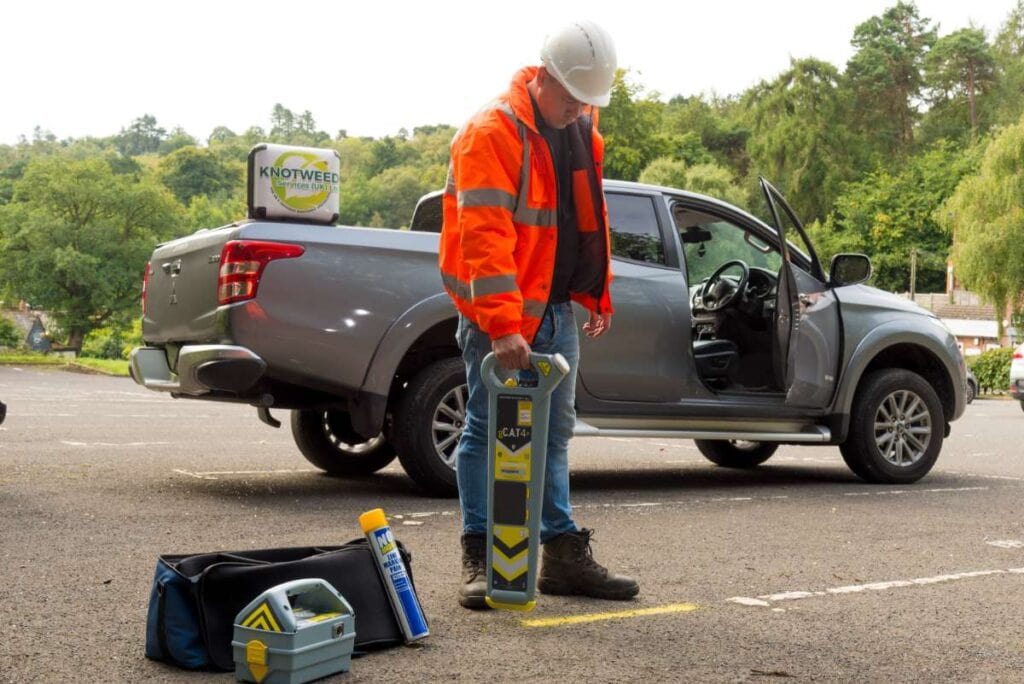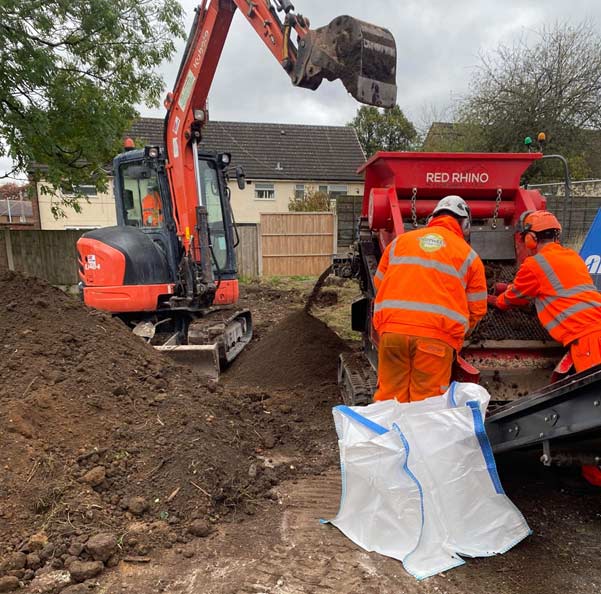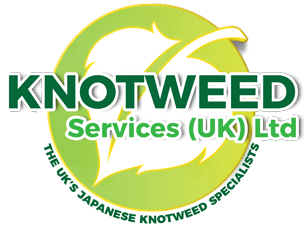JAPANESE KNOTWEED REMOVAL Eastleigh
4
LIVE KNOTWEED JOBS IN Eastleigh
76
SUCCESSFUL KNOTWEED REMOVAL PROJECTS IN Eastleigh
100%
SUCCESSFUL PROPERTY SALES AFTER TREATMENT
1
Eastleigh BASED KNOTWEED STAFF
NO OTHER JAPANESE KNOTWEED COMPANIES IN Eastleigh HAVE OUR TRACK RECORD
As one of the leading Japanese knotweed removal companies in Eastleigh, Knotweed Services specializes in removing, controlling, and treating Japanese knotweed throughout Eastleigh and England. With our dedicated surveyors working out of offices based in Eastleigh, we’re readily available and here to help.
Knotweed Services is a member of the PCA, a government-approved trade body for “the damp, waterproofing, wood preservation and invasive weeds industries”. We deliver the best treatment and control methods for Japanese knotweed removal.
Knotweed Services has successfully controlled many large knotweed infestations in and around Eastleigh and England. For effective knotweed control to occur, thorough identification, surveying, treatment, and monitoring are necessary.
Japanese Knotweed: Advice and Solutions
Our reputation as experts in Japanese Knotweed control has spread far and wide. We’ve conducted over 1000 successful treatments for homeowners, letting agents, insurance companies, mortgage lenders and local councils across the UK.
If you own a commercial building or property, and Japanese knotweed is present, your project may be delayed until your infestation is being dealt with correctly and legally.
Beware of Japanese Knotweed: What it is and What to Do About It
- Knotweed can grow through asphalt and concrete, which poses a threat to the foundation of your home or building.
- Mortgage lenders are concerned about the presence of Japanese Knotweed in buildings they are considering investing in.
- Knotweed clogs roads and other pathways, obstructing traffic and access to buildings and other structures. The dense root systems of this invasive plant make it a major hassle for commercial property owners.
Knotweed Services offers a guarantee against re-infection for customers in Eastleigh who have Japanese Knotweed. We will remove the plant in its entirety and transfer it to a disposal site.



FREE IDENTIFICATION
Fill in the form below, attach your pictures and we’ll let you know if the plant in your picture is Japanese Knotweed.
Call our professionals now to start the treatment and management of your infestation in Eastleigh
Call us on: 0121 725 6348 or 0800 689 4146 for an on the spot estimate
Knotweed Services is here to help you.
RESIDENTIAL JAPANESE KNOTWEED REMOVAL Eastleigh.
WHAT YOU NEED TO KNOW ABOUT JAPANESE KNOTWEED REMOVAL Eastleigh
As Japanese knotweed infestations vary considerably from property to property, it’s not surprising that approaches to treating and controlling the weed will too. It may be necessary to use one method or a combination of different approaches.
Japanese knotweed removal is a complex, fact-based process. Our specialists have the training and experience to factor in all facts in order to achieve optimal results and removal. An insurance-backed guarantee is available.
— JAPANESE KNOTWEED REMOVAL OPTIONS AVAILABLE IN Eastleigh

FOLIAR SPRAYING *
The most common treatment for Japanese Knotweed is the spraying of powerful chemicals with a knapsack. We make sure that other plants aren’t damaged. The best time to spray Japanese Knotweed is in the spring.

FOLIAR LEAF WIPING *
With this Japanese knotweed treatment, we use a device to ‘physically wipe’ our chemicals onto the Japanese knotweed leaves. Because this use is so exact, we can often utilise a larger concentration of chemical.

STEM INJECTION
We directly administer a measured amount of herbicide to the invasive weed. Due to the injection directly into the Japanese Knotweed, this is the most ingenious elimination technique. It is not affected by the weather.

BIOMASS REDUCTION
Biomass is a sort of excavation and removal, but instead of excavating all of the soil affected by Japanese Knotweed, we simply remove the afflicted portions. It is an effective method of Japanese Knotweed control that allows for the reuse of the soil. minimising landfill usage.

CROWN REMOVAL
Removing the crown and stem from the equation is an excellent method since they can regenerate, and even small pieces of chopped crown or stem can regenerate and become a new invasive weed.
— COMMERCIAL TREATMENT OPTIONS AVAILABLE IN Eastleigh

SOIL SCREENING
A tried and tested methodology used on hundreds of sites across the UK.
Using the screening method, the Japanese knotweed rhizome material is separated from the soil material. The Japanese knotweed material is then either transported to licensed landfill at a much lower disposal rate or incinerated on site using a D6 exemption from the Environment Agency or Natural Resources Wales.
The cleaned soils can then be reused in locations away from any construction, normally in soft landscaping areas.
This can reduce the landfill & backfill requirement costs significantly and can also help to reduce the carbon footprint on site due to reduced vehicle movements to landfill.

BIOSECURITY SUPERVISION
Knotweed Services can provide a biosecurity operative to supervise any excavations and movement of soils containing Japanese knotweed on site.
As part of these measures, we can provide a biosecurity boot wash and machine-washing area installed in an area at the entrance to the site.
We will provide all toolbox talks for the main contractor on site, which will be signed by all contractors involved in the operation on site.
We can provide temporary geotextile barriers if required in areas to maintain the biosecurity on site.
Once the works have been completed, we will provide the client with a full biosecurity report.
This method can be used in conjunction with other treatment methods on site.

EXCAVATION AND DISPOSAL
This treatment method is ideal where time constraints are present and there’s no other option other than to remove both the Japanese Knotweed and contaminated soil to a registered landfill.
By removing all traces of the infestation quickly, this offers a rapid solution to your problem and allows your commercial project to begin groundwork’s almost straight away. When time is of the essence, there is no quicker Japanese Knotweed removal/treatment method.
Any waste taken off-site will be done so with a licensed waste carrier to a suitably authorised landfill site.

CELL BURIAL
Cell burial comprises of moving Knotweed contaminated soil from one location on site, burying it in an excavated pit which is lined with a root barrier membrane, in a different position on the site.
The burial requirements for Japanese Knotweed are as follows:
- The Environment Agency recommends that the top of the burial cell should be a minimum of 2 metres below ground level.
- The overall depth of the burial pit should be in excess of 5 metres deep. All root barrier seams are welded together forming an encapsulated cell from which the Japanese Knotweed cannot escape. Clean soil is then used to backfill on top of the cell.
- To prevent accidental disturbance of the burial site, it is recorded on all site plans and future land owners should be made aware of the location.

STOCKPILE & TREAT
Bunding is the method of relocating contaminated Japanese Knotweed soil to a different area of the site being treated. A bund is a shallow area of the contaminated soil, typically 0.5m deep.
The bund can either be raised, on top of the ground, or placed within an excavation to make the surface flush with the surrounding area.
The purpose of the bund is to move the Japanese Knotweed to an area of the site that is not used. This ‘buys time’ for treatment that would not be possible where the Japanese Knotweed was originally located.

HERBICIDE APPLICATION
At Knotweed Services we can provide the client with bespoke treatment plans depending on the locations of the Japanese knotweed.
These plans can work in conjunction with other methods of treatment where access is limited to pedestrian movements i.e., embankments or existing pathways within a site.
This will normally consist of up to 3 visits per annum to apply herbicide by either foliar spray technique or stem injection during the growing season over a period of 3 years, with a monitoring period of 2 years thereafter.
We would select the appropriate herbicides depending on the surrounding foliage or environmental constraints.
After each visit a full treatment record would be provided with photos showing the progress of the works and then an annual report.
